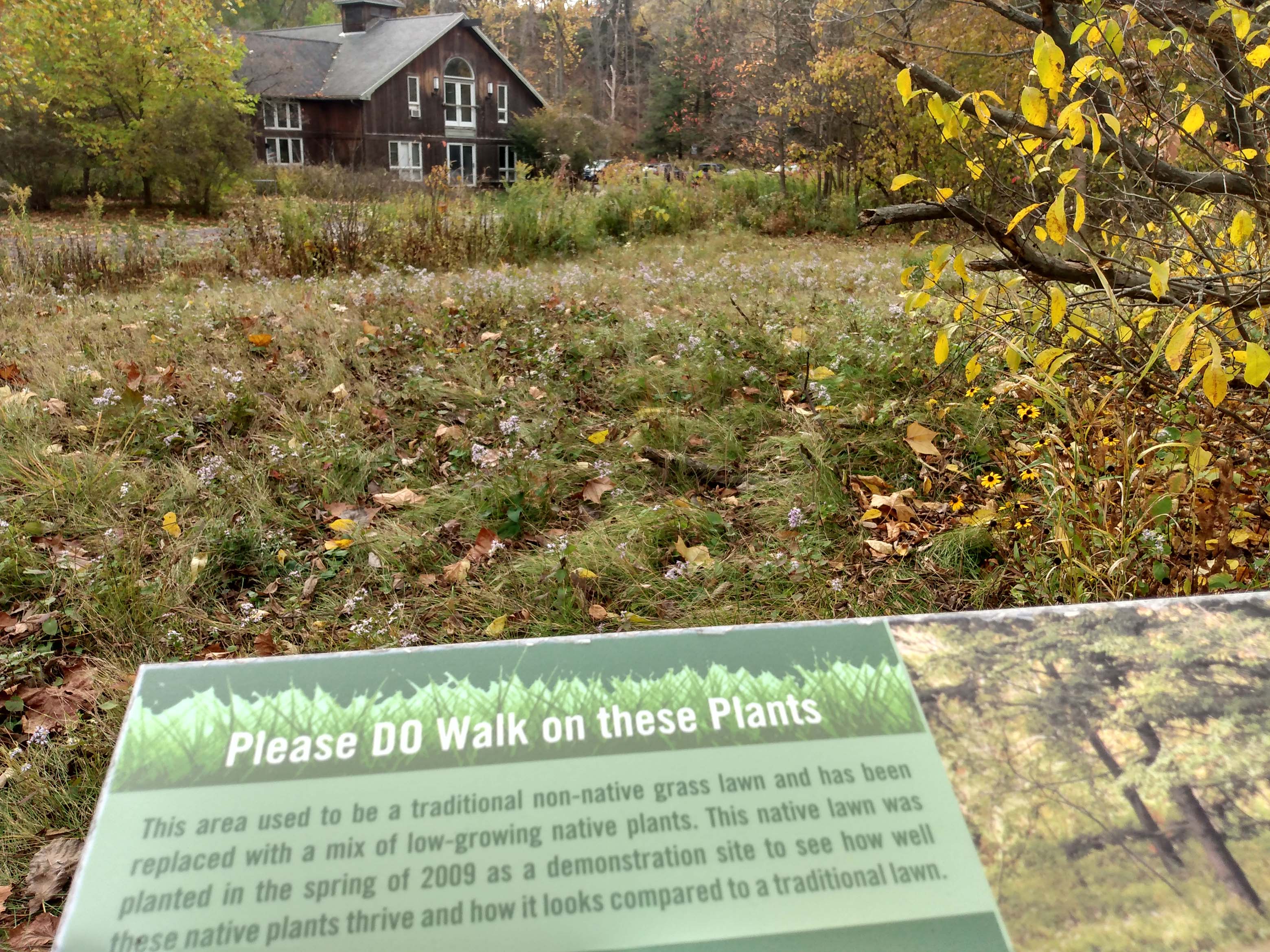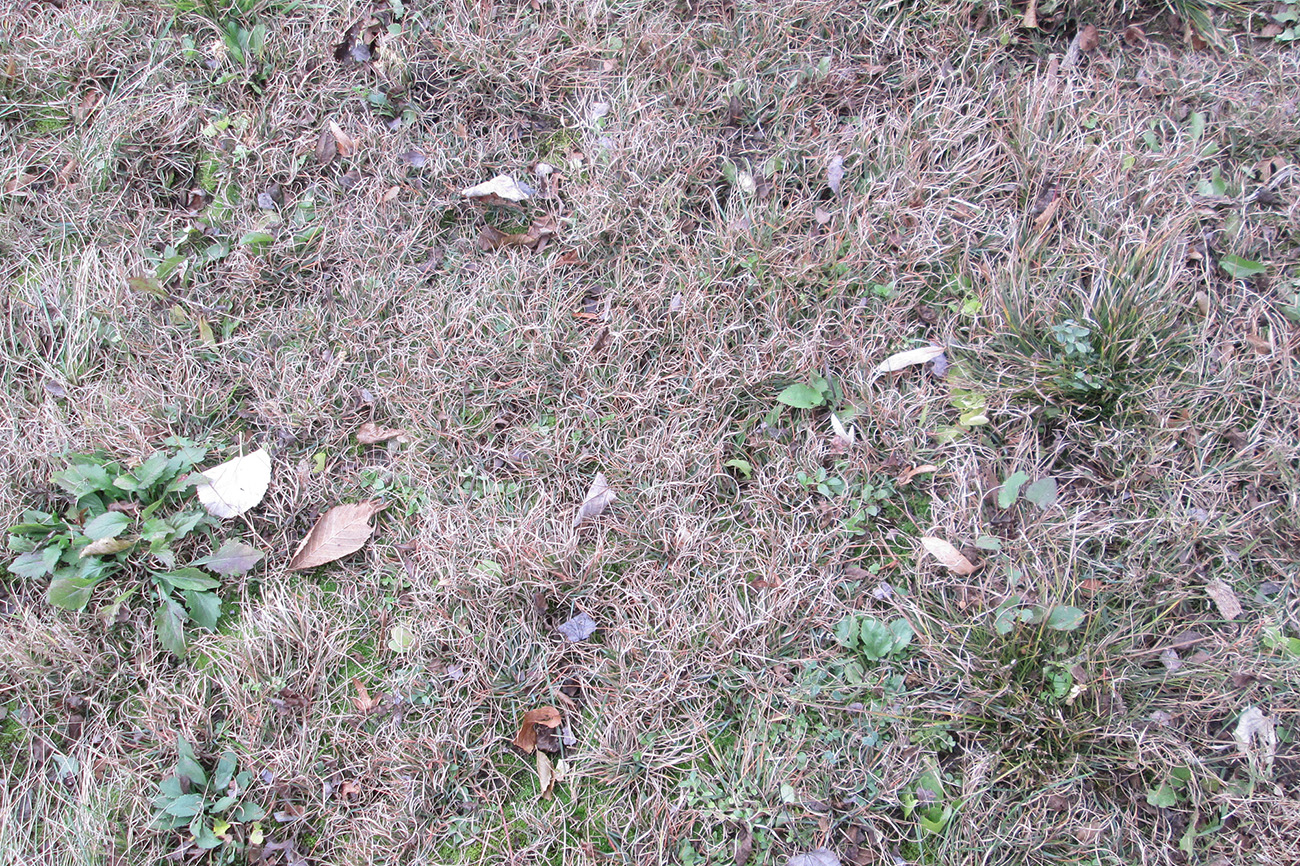![]()
Botanic Gardens Native Lawn
Sustainable Landscapes Trail at Cornell University
Planted in 2009 and continuing today, this site was designed to demonstrate how well native plants thrive and can perform as meadow areas, with fewer pesticides and chemicals. The site was used as a model for high-performing replacement for traditional lawns. Native lawns are created with short and slow growing native grass species that require less irrigation and are more likely to be resistant to weeds, pests, and fungus. The initial installation and establishment of the grass is a crucial part to the success and sustainability of a native lawn.
Return to Sustainable Landscape Trail Sites Homepage
Why is this site sustainable?
Annually in the U.S., $750 million is spent on grass seed, 100 million tons of fertilizer is used, 80 million pounds of pesticides are used, and 40 hours are spent on average mowing a home lawn. In order to offset the CO2emissions from the average 10 gallons of gas required, eight 2” diameter sugar maple trees would need to be planted here in the northeast. 25%- 40% of landfill space is taken up by grass clippings from mowed lawns, and per hour of operation, small gas-powered engines used for lawn care emit more hydrocarbon than a typical automobile. 10,000 ft2 of turf requires 10,000 gallons of water each summer to stay green. And, 30% of the water consumed on the East Coast goes to watering lawns. All of this is justification to look at different ways we can manage our large, grassy areas.
Compared to traditional turf grass lawns, so-called "native lawns":
- Require no fertilizer, which uses energy and emits a significant amount of nitrous oxide, a greenhouse gas, during its production
- Require no pesticides
- Provide a diversity of native plants that supports increased biodiversity for pollinators and other invertebrates
- Require minimal mowing, which reduces the amount of gas used and greenhouse emissions from lawnmowers.
- Require minimal to no watering
- Used as a teaching landscape for University classes and the public
- Serves as a demonstration for encouraging the implementation of a native lawn in a home landscape

Native Lawn Construction and Function
Source: Native Plants for Wildlife Habitat and Conservation Landscaping Chesapeake Bay Watershed, USDA Climate Change Resource Center Tree Carbon Calculator
Beginning in 2009, a planting plan was created and seedlings were planted in May. A species list was developed using open and dry natural areas and power line rights-of-way as reference sites. Seeds were collected and propagated by staff and volunteers, then moistened and stored at 40 degrees for 60 days to achieve the best germination rate possible.
The lawn consists of a planting mix of low-growing grasses and forbs. The native lawn includes 13 species of forbs and 6 species of grasses. Some woodland and meadow herbs were also added. The lawn has been expanded annually each following year
Plant species were selected that are suitable for both full sun and shady as well as wet and dry conditions.
- Danthonia spicata and Danthonia compressa (poverty oat grass) are dominant in the planting. Penstemon hirsutus is also widely planted.
- The sun loving, dry site forbs include Phlox subulata and Antennaria plantaginafolia..
- Bluets, Hedyotis caerulea add color to the mix.
Site Planting List
To research best practices for planting and managing a native lawn, two species of plants, Danthonia spicata and Danthonia compressa, were seeded at two different rates. One section of the lawn was planted with 600 PLS (pure live seeds) per ft2and another section was planted with 1,425 PLS per ft2.
After the plants were established, stem density and cover were measured. The results showed that the plants seeded at the higher density had a stem density that was almost 4 times the stem density of the plants seeded at 600 PLS/ft2.


